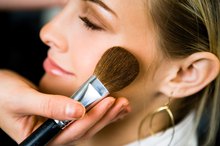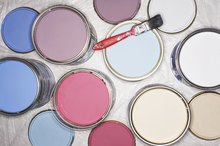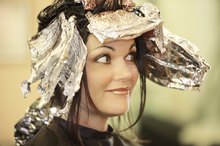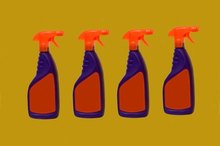The Disadvantages of Sodium Laureth Sulfate
Sodium laureth sulfate, or SLES, is a widely used detergent present in many shampoos and personal care items 12. This compound can be irritating to the eyes and skin, and may contain the carcinogen dioxane. The Cosmetic, Toiletry and Fragrance Association discourage SLES for prolonged use, unless in extremely low concentrations. According to a U.S. Environmental Protection Agency study, sodium laureth sulfate applied above a 5 percent concentration produced severe irritation, hair loss and death in laboratory animals 12. Despite controversy, SLES is a commonly used compound.
1,4-Dioxane Contamination
The Campaign for Safe Cosmetics maintains that sodium laureth sulfate requires processing with other chemicals to reduce harshness 12. Ethylene oxide applied to SLES can result in 1,4-dioxane--a U.S. Environmental Protection Agency known carcinogen. The Campaign for Safe Cosmetics recommends avoiding products that list sodium laureth sulfate, including sodium myreth sulfate, as an ingredient 12. Although many personal care product manufacturers insist that only a little amount of 1,4-dioxane is present in items such as baby shampoo and body wash, it is prudent to recognize that exposure to this carcinogen may pose a threat to your health.
For example, long-term ingestion of 1,4-dioxane in rats caused cancer, tumors, kidney and liver damage. Some oral hygiene products such as toothpaste contain SLES. Long-term oral exposure increased tumor appearances in both humans and rats. The Agency for Toxic Substances and Disease registry states that long-term skin exposure mainly effects the liver and the kidney with possible links to cancer.
- The Campaign for Safe Cosmetics maintains that sodium laureth sulfate requires processing with other chemicals to reduce harshness 1.
- Although many personal care product manufacturers insist that only a little amount of 1,4-dioxane is present in items such as baby shampoo and body wash, it is prudent to recognize that exposure to this carcinogen may pose a threat to your health.
Allergic Reactions
List of Toxic Ingredients Found in Skin Care
Learn More
Sodium laureth sulfate has an added ether chain, which is an inexpensive cleansing agent usually added to cleansers and shampoo 12. It is often used as a wetting agent in the textile industry and may cause extreme scalp irritation and hair loss, according the to The Allergy website. For infants, SLES penetration into the eyes and other tissues may be dangerous due to the enhanced susceptibility of absorption.
Hair Loss
The Hair Loss Control Clinic says that SLES causes a dramatic decline in the hair growth cycle and prolongs the hair loss phase by a factor of eight. Scalp irritation and hair loss can result from shampoos with the SLES ingredient. Its presence may aggravate hair follicles, exacerbating hair loss and associated scalp conditions. The Campaign for Safe Cosmetics suggests using chemical-free hair products to avoid complications associated with the compound.
- The Hair Loss Control Clinic says that SLES causes a dramatic decline in the hair growth cycle and prolongs the hair loss phase by a factor of eight.
- Its presence may aggravate hair follicles, exacerbating hair loss and associated scalp conditions.
Related Articles
References
Writer Bio
Skyler White is an avid writer and anthropologist who has written for numerous publications. As a writing professional since 2005, White's areas of interests include lifestyle, business, medicine, forensics, animals and green living. She has a Bachelor of Arts in anthropology from San Francisco State University and a Master of Science in forensic science from Pace University.









